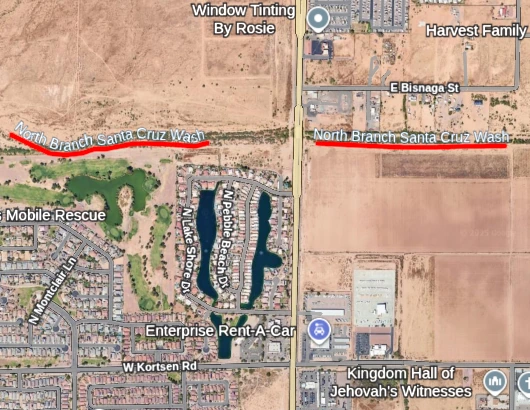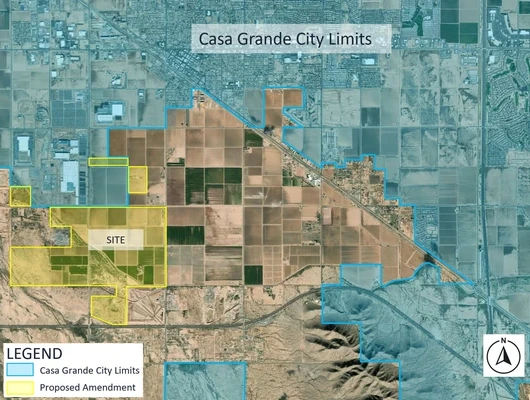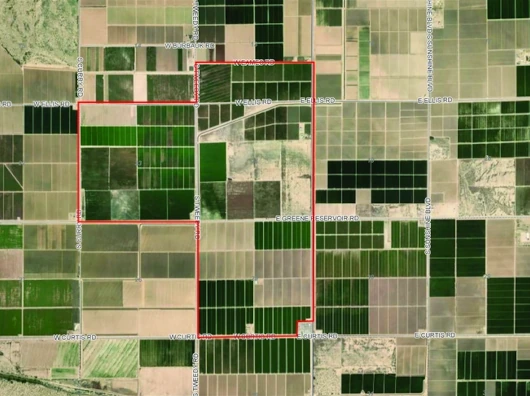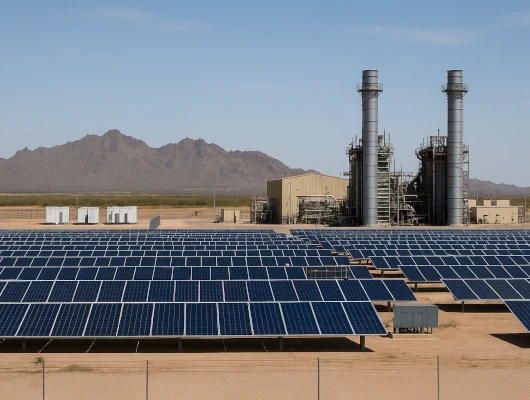At the Arizona Water Banking Authority meeting on December 11, officials reviewed plans for managing 2025’s Tier 1 shortage declaration on the Colorado River. The shortage requires Arizona to reduce its Colorado River water use by 512,000 acre-feet – including 320,000 acre-feet under 2007 operating guidelines and 192,000 acre-feet in additional contributions to Lake Mead under the Lower Basin Drought Contingency Plan. According to a recent joint message from the Arizona Department of Water Resources and Central Arizona Project, these reductions come as the region faces a drought extending beyond 20 years.
The impacts of water reductions are not distributed equally across Arizona. Pinal County relies heavily on Non-Indian Agricultural pool water from the Central Arizona Project, which has lower priority in times of shortage. Through agreements developed among Arizona water users, high-priority Central Arizona Project water supplies for cities and tribes remain protected. However, when drought conditions trigger reductions, the Non-Indian Agricultural pool water is among the first supplies to be cut. Under a Tier 1 shortage declaration for 2025, Arizona’s Colorado River entitlement will be reduced by 512,000 acre-feet – including 320,000 acre-feet in reductions under 2007 operating guidelines and 192,000 acre-feet in additional contributions to Lake Mead under the Lower Basin Drought Contingency Plan.
What Are Long-Term Storage Credits?
Long-Term Storage Credits (LTSC) are a type of “water savings account.” Water is stored in underground aquifers or other facilities, earning a credit for every acre-foot stored. These credits can then be used later to offset water shortages or meet legal obligations, such as fulfilling tribal water rights.
Why is Pinal County Not Getting New Water Credits?
While the Phoenix and Tucson Active Management Areas (AMAs) will receive withdrawal fee revenues that can be used to purchase water credits, with Phoenix getting $1.67 million and Tucson receiving $367,337, Pinal County is set to receive $0 for such purchases. Withdrawal fees are charges collected from groundwater users that can be used to purchase Long-Term Storage Credits— essentially water stored underground for future use. This difference between Pinal County and the other AMAs stems from several factors:
- Legislative Direction of Funds
From 2020-2026, groundwater withdrawal fees of up to $2.50 per acre-foot collected in the Pinal Active Management Area must be used exclusively to fund irrigation district projects. These projects focus on the construction and rehabilitation of wells and infrastructure for pumping and efficiently delivering groundwater, as outlined by House Bill 254.0 Under this legislative mandate, these funds cannot be used to purchase Long-Term Storage Credits (LTSC) during this period. - Water Storage Tax Situation
The Central Arizona Project (CAP) Water Conservation District Board has resolved to retain water storage property taxes for operation, maintenance, and CAP repayment costs. This decision affects all three AMAs, leaving no water storage tax funds available for new long term storage credit purchases in 2025. - Existing Reserves Are Substantial
Pinal County currently holds 234,791 acre-feet of Long-Term Storage Credits, which are considered sufficient for meeting current obligations and short-term needs. In contrast, Phoenix AMA holds 1,589,323 acre-feet, and Tucson AMA holds 532,093 acre-feet. However, these larger reserves in Phoenix and Tucson are prioritized for Central Arizona Project (CAP) Municipal and Industrial (M&I) water firming, reflecting their urban and industrial water demands.
What Does This Mean for Arizona?
The state’s water management strategy reflects broader changes:
- Priority-Based Reductions
The reductions in Colorado River supplies under a Tier 1 shortage condition will not impact CAP Municipal and Industrial priority water users or on-River Municipal and Industrial contractors in 2025. However, the reductions significantly affect Non-Indian Agricultural pool supplies, which is particularly important for Pinal County’s agricultural water users. - Focus on Strategic Credit Development
The Arizona Water Banking Authority plans to purchase 6,245 acre-feet of credits in 2025, costing about $2.04 million. In the Phoenix AMA, $1.68 million will be spent to develop 5,327 acre-feet of Intentionally Created Surplus (ICS) firming credits through an agreement with the Gila River Indian Community. The Tucson AMA plans potential Long-Term Storage Credit (LTSC) acquisitions totaling 918 acre-feet at an estimated cost of $367,000. - Long-term Planning
The Arizona Water Banking Authority continues monthly coordination with the Arizona Department of Water Resources and Central Arizona Project Water Conservation District on recovery planning, including work on the Joint Shortage Analysis Model and credit distribution tools.
How Did Arizona Prepare for These Reductions?
Arizona water users have worked collaboratively for years to protect Colorado River water supplies. In 2019, Arizona developed its Drought Contingency Plan (DCP) implementation through a steering committee that included more than 40 representatives from tribes, cities, agriculture, developers, environmental organizations, and elected officials. The plan shares resources and mitigates shortage impacts – some users commit to leaving extra water in Lake Mead to reduce future risks, while others share water with the most severely impacted users. While these collaborative efforts help reduce the impact of near-term reductions, agricultural users in places like Pinal County still face significant adjustments.
What Can Residents Expect?
With Colorado River shortages continuing, Arizona’s planning shows a strategic approach to water management across its regions:
- Phoenix AMA will invest $1.68 million to develop 5,327 acre-feet of Intentionally Created Surplus firming credits
- Tucson AMA plans to acquire 918 acre-feet of credits at an estimated cost of $367,000
- Pinal AMA will continue focusing on infrastructure improvements through 2026
The strategy demonstrates how different regions must adapt their approaches based on local needs and legislative requirements while working within the broader framework of Arizona’s water management goals.
The Arizona Water Banking Authority will continue monitoring Colorado River conditions and engaging with stakeholders as it implements these plans, maintaining its role in securing Arizona’s water future through varied approaches across different regions.








